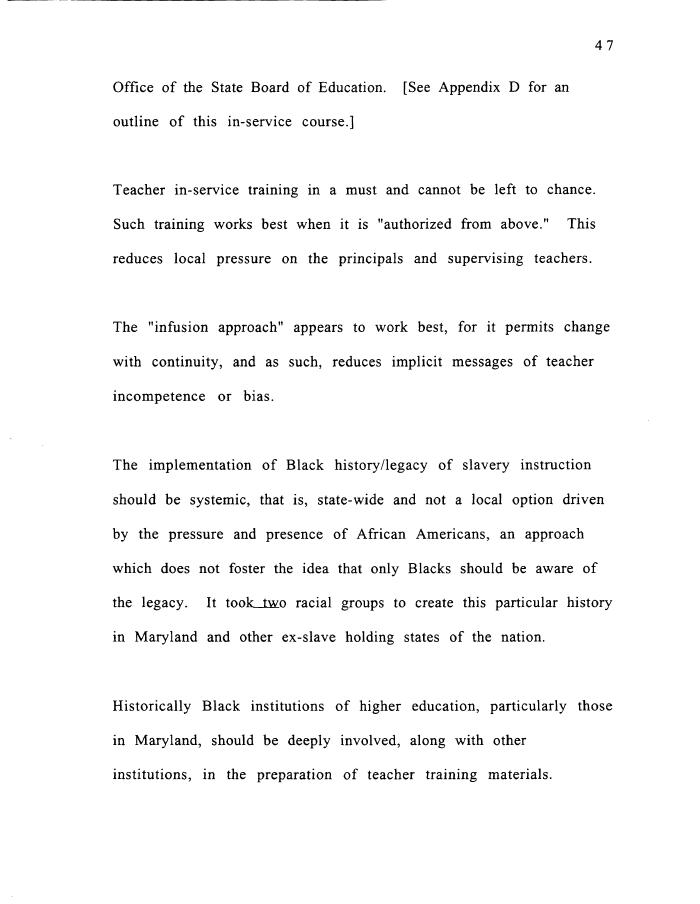 |
||||
|
TASK FORCE TO STUDY THE HISTORY AND LEGACY OF SLAVERY IN MARYLAND (Final Report) 1999/12/31 MdHR 991422 MdHR 991422, Image No: 56 Print image (34K) |
 |
||||
|
TASK FORCE TO STUDY THE HISTORY AND LEGACY OF SLAVERY IN MARYLAND (Final Report) 1999/12/31 MdHR 991422 MdHR 991422, Image No: 56 Print image (34K) |
| 47 Office of the State Board of Education. [See Appendix D for an outline of this in-service course.] Teacher in-service training in a must and cannot be left to chance. Such training works best when it is "authorized from above." This reduces local pressure on the principals and supervising teachers. The "infusion approach" appears to work best, for it permits change with continuity, and as such, reduces implicit messages of teacher incompetence or bias. The implementation of Black history/legacy of slavery instruction should be systemic, that is, state-wide and not a local option driven by the pressure and presence of African Americans, an approach which does not foster the idea that only Blacks should be aware of the legacy. It toole_tw_o racial groups to create this particular history in Maryland and other ex-slave holding states of the nation. Historically Black institutions of higher education, particularly those in Maryland, should be deeply involved, along with other institutions, in the preparation of teacher training materials. |